From Hatchling to Adult: The Life Cycle of a Cinnamon Cockatiel
Explore the journey of a Cinnamon Cockatiel, from a tiny hatchling to a captivating adult bird. A fascinating look into the life cycle of this unique species.
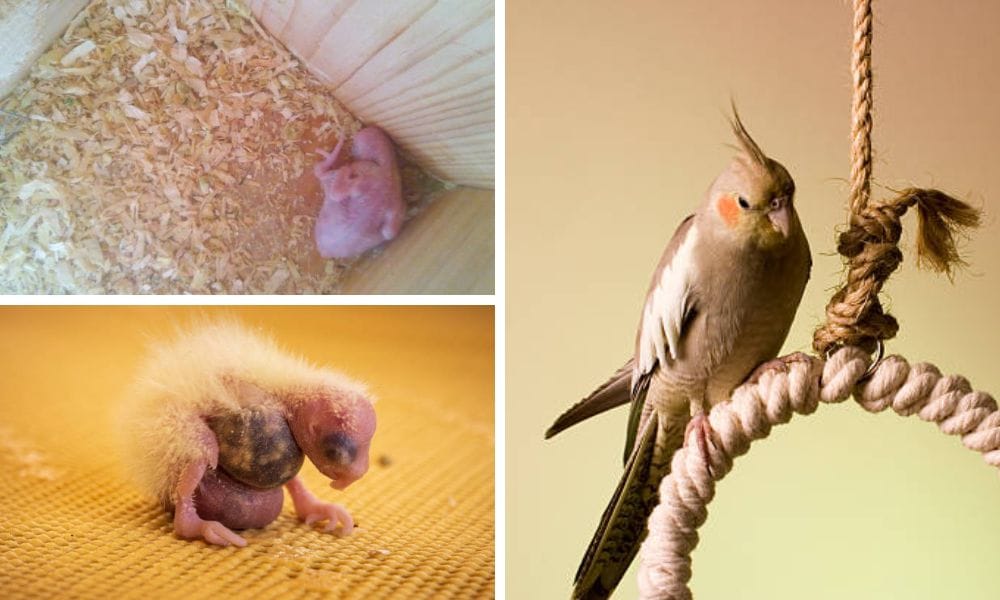
Key Takeaways:
- Understand the unique characteristics and stages of development in the life cycle of a cinnamon cockatiel.
- Learn about the specific care requirements for cinnamon cockatiels at different life stages.
- Discover the importance of proper breeding, socialization, and health management for these popular pet birds.
Cinnamon cockatiels, with their captivating cinnamon coloring and endearing personalities, are a cherished member of the cockatoo family. These birds are not only known for their unique coloring but also for their friendly nature, making them one of the most popular pet birds around the globe. This article will guide you through the fascinating journey of a cinnamon cockatiel from a hatchling to a fully-fledged adult.
The Early Days: Hatching and Nestling
The life of a cinnamon cockatiel begins in an egg, typically laid in a clutch of two to eight eggs. After an incubation period of about 18 to 21 days, a tiny, blind, and featherless hatchling emerges. These young birds are entirely dependent on their parents for warmth and nutrition. During this stage, the proud mom and dad cockatiel take turns feeding their offspring a special regurgitated mixture.
In the nest, the hatchlings grow rapidly. Within a few weeks, they start to develop their first feathers. At this stage, the cinnamon pied cockatiel's unique coloring begins to show, with pale yellow feathers and distinctive yellow barring. The brown pigment that gives these birds their cinnamon hue is also evident early on.
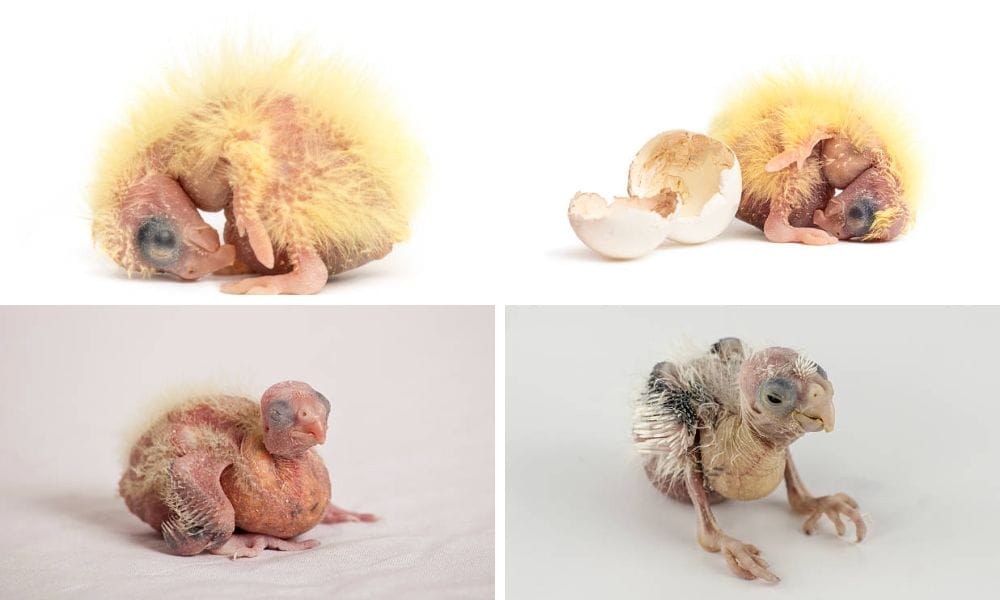
Fledging: The First Flight
As the fledglings grow, their feathers, including the wings and tail, develop enough for their first flight. This usually occurs around the 4 to 5-week mark. The process of fledging is critical as it marks the young bird's first step towards independence. Bird breeders and cockatiel owners often witness this momentous occasion with great anticipation.
During fledging, the young cinnamon cockatiels learn to fly and land, a skill that is crucial for their survival. Bird enthusiasts often note that cinnamon cockatiels, being hardy birds, are quite adept at this stage, showing strong flight capabilities and a keen sense of their surroundings.
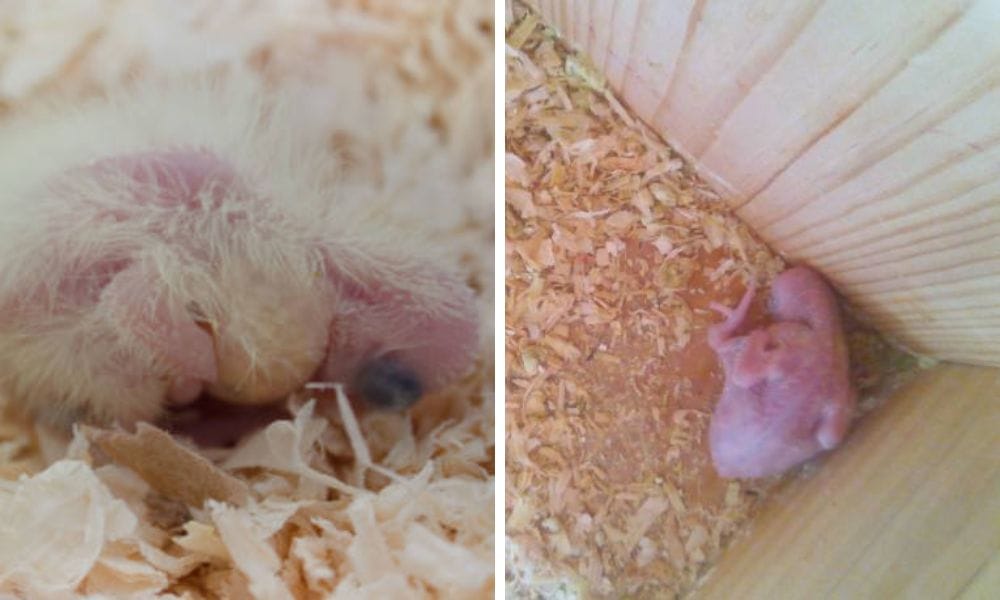
Juvenile Stage: Exploring and Learning
After fledging, the juvenile cinnamon cockatiels continue to hone their skills and explore their environment. They are known to be curious and may start to mimic sounds they hear frequently. This is also the time when their social behavior becomes more pronounced, and they begin to interact more with their siblings and human caretakers.
The juvenile stage is also when the first molt occurs. This is when the young birds shed their baby feathers and grow their adult plumage. The overall plumage of cinnamon pearl cockatiels becomes more defined, with the males typically showcasing a brighter yellow face and the females displaying more subtle hues.
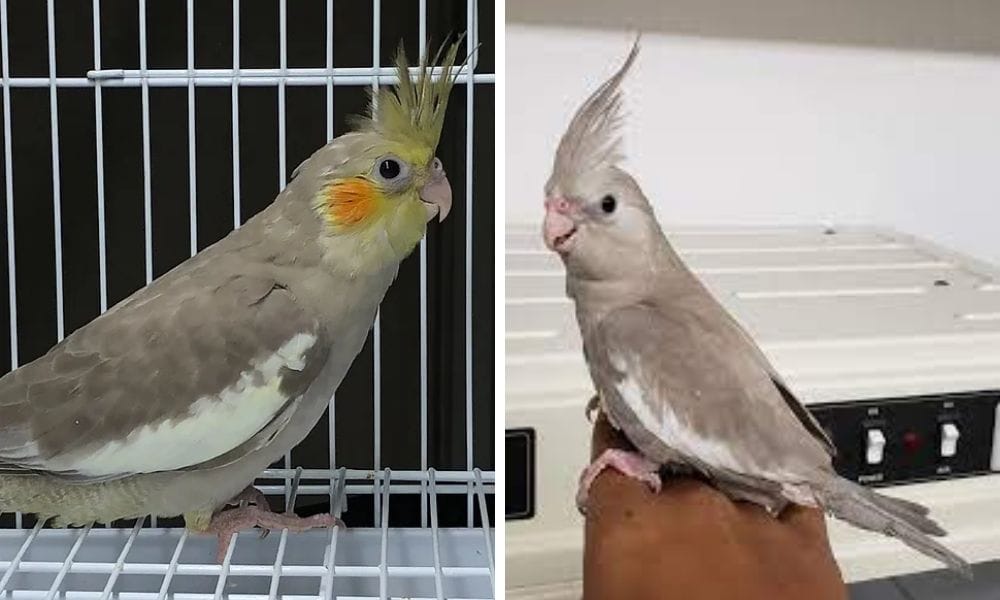
Sexual Maturity: Identifying Gender
As cinnamon cockatiels approach sexual maturity, usually around 6 to 12 months of age, distinguishing between males and females becomes easier. Males often have a brighter yellow face and may lose the yellow barring on the tail and wings. Females, on the other hand, retain the barring and may have a more muted face color.
Sexing cockatiels can be challenging, but observing behavior and physical characteristics can be a good indicator. For example, males are more likely to vocalize and mimic sounds, while females may exhibit nesting behaviors. Some cockatiel species, like the isabelle cockatiel, may have more distinct sexual dimorphism, making it easier to identify males from females.
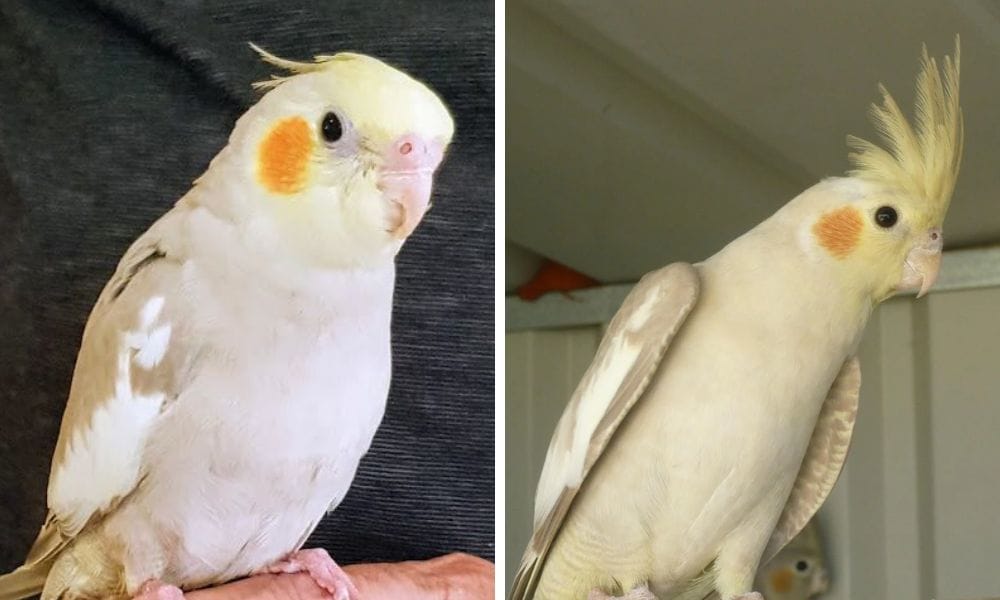
Breeding: The Cycle Continues
When cinnamon cockatiels reach breeding age, they may start to exhibit mating behaviors. This includes courtship displays, such as the male strutting and serenading the female. If the pair is compatible, they will mate and the cycle of life begins anew with the laying of eggs.
Breeding cinnamon cockatiels requires a deep understanding of their needs, including a suitable nesting area and a diet rich in nutrients to support egg production and chick development. Responsible bird breeders ensure that the birds are healthy and well-cared for throughout this process.
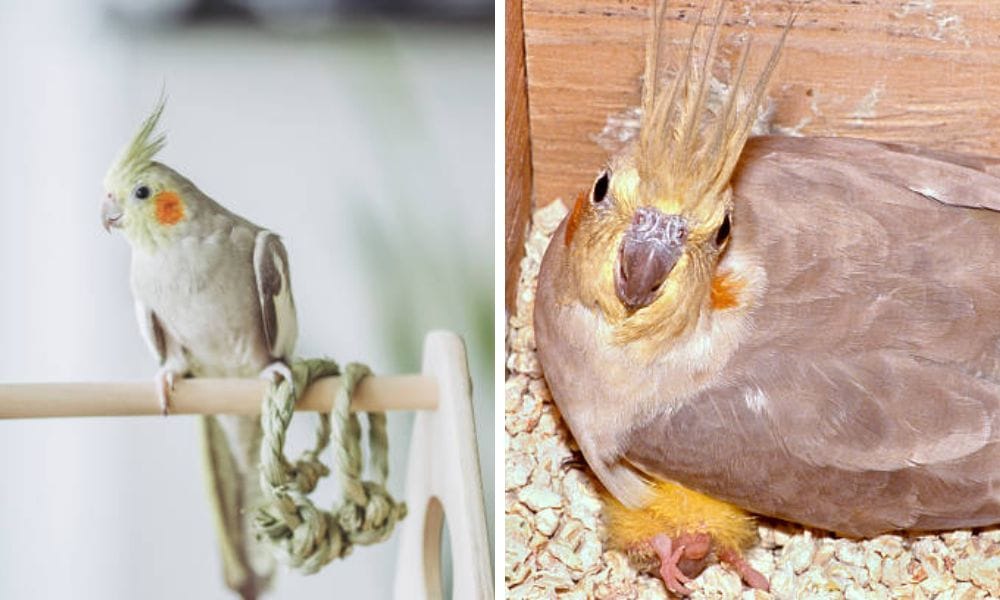
Understanding Cockatiel Mutations: A Colorful Palette
Cockatiel enthusiasts often marvel at the variety of color mutations these charming birds exhibit. The cinnamon pearl cockatiel is a prime example of such diversity, with its warm, chocolate brown feathers and delicate pearling. This mutation is a sex linked recessive mutation, meaning that it's often more challenging to predict when breeding. The bright yellow face and orange cheek patch that are iconic to cockatiels can vary significantly in intensity and pattern among these mutations. Breeders like Barbara Rost have been instrumental in understanding and cultivating these beautiful variations, providing invaluable insights into the genetics of these pet birds.
In the wild, the typical grey cockatiel with its stark white faces and vibrant cheek patches is a common sight. However, in captivity, breeders have developed a spectrum of mutations, including the dominant silver and pastel face, alongside the well-known lutino and cinnamon pearl varieties. These color mutations not only add to the aesthetic appeal of the cockatiel but can also influence pricing, with some mutations being typically higher priced due to their rarity or demand among bird enthusiasts. Pictures of these stunning variations can be found in avian publications and online, showcasing the beauty and diversity of these popular pet birds.
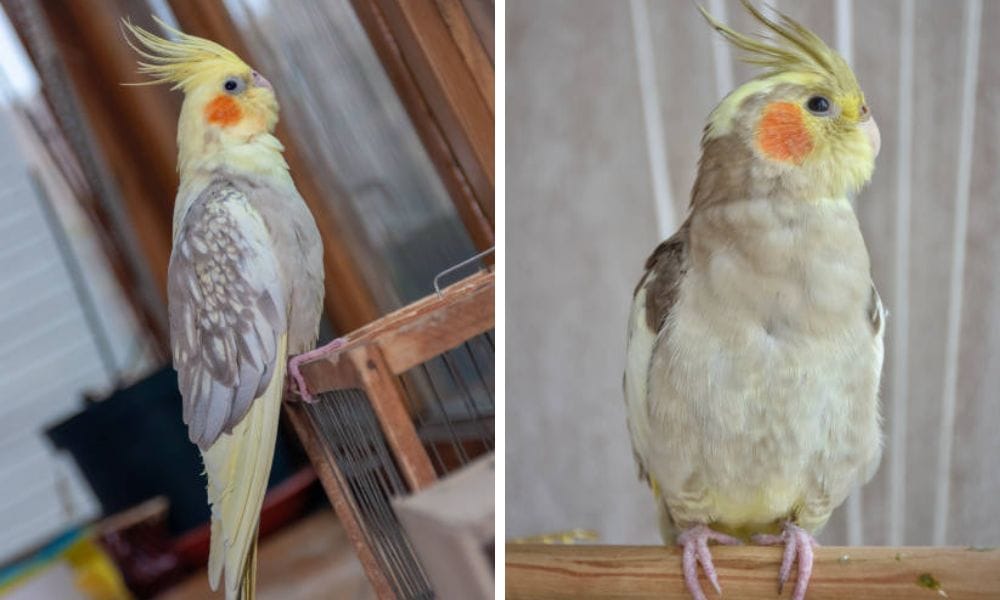
The Significance of Color Mutation in Cockatiels
Color mutation in cockatiels is not just a fascinating aspect for breeders and enthusiasts; it's a window into the genetic blueprint of these charming birds. When we talk about color mutation, we're referring to the variations from the standard grey cockatiel, which is the result of selective breeding. These mutations can range from lutino, which is a lovely yellow, to the striking whiteface mutation. Each color mutation carries its own genetic markers, and understanding these can help breeders predict the coloration of offspring.
Moreover, color mutations can affect the value and rarity of a cockatiel. For instance, the cinnamon mutation, which gives the feathers a warm, brownish hue, is particularly sought after. It's important to note that while color mutations are primarily aesthetic, they do not affect the overall health or temperament of the bird. Enthusiasts often seek out specific mutations for their visual appeal, making the breeding of these birds a meticulous and rewarding endeavor.
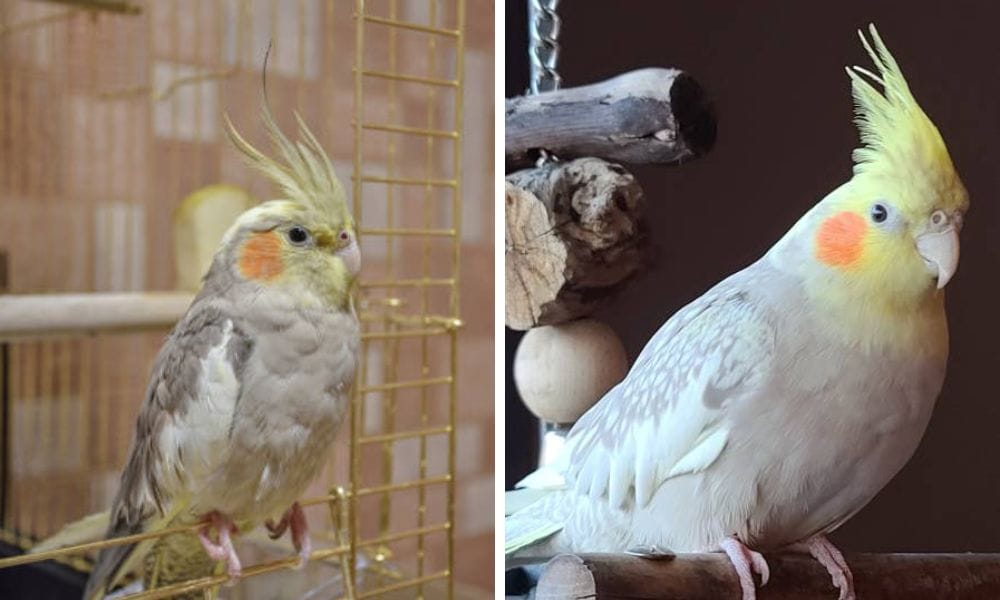
Description Cockatiels: A Guide to Their Diverse Appearances
Description cockatiels encompass the various visual characteristics that help identify the breed and individual birds. Cockatiels are part of the parrot family, and they exhibit a range of features that can help owners and breeders distinguish one bird from another. These features include the crest's shape and size, the color and pattern of the plumage, and even the color of the bird's cheeks. The standard grey cockatiel, with its orange cheek patches and sleek body, is the most commonly recognized, but there are many other variations to admire.
Each color mutation in cockatiels comes with its own unique description. For example, the pied cockatiel has an irregular pattern of colors, often with patches of yellow and white on a grey background. The pearl cockatiel, on the other hand, has a scalloped pattern to its feathers, giving it a distinctly elegant appearance. These descriptions are not just for show; they play a crucial role in identifying birds, particularly when it comes to breeding and maintaining the integrity of certain color lines.
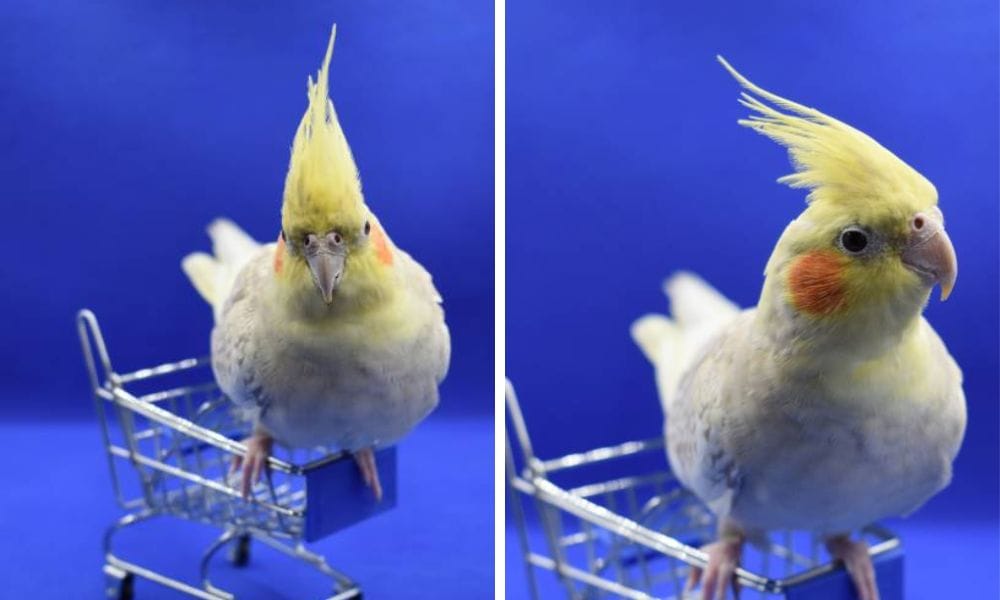
Cockatiel Behavior: Understanding Your Feathered Friend
When it comes to cockatiel behavior, these good pets are known for their sociable and affectionate nature. Observing your cockatiel's behavior is not only enjoyable but also essential for bonding and identifying any potential health issues. For instance, a cockatiel that is bobbing its head frequently may be trying to get attention or indicate that it's time for a meal. On the other hand, a cockatiel that remains fluffed up for long periods may be feeling unwell. Understanding these subtle cues is crucial for any cockatiel owner.
Moreover, sex cockatiels can exhibit distinct behaviors that help in identifying their gender, which can be a tricky task without genetic testing. Males are typically more vocal and may display courtship behaviors such as singing and strutting with wings slightly lifted to showcase their orange cheek patch. Females, while often less showy, can be just as engaging and may exhibit nesting behaviors when they reach sexual maturity. Recognizing and responding to these behaviors can lead to a more harmonious relationship with your pet bird, ensuring that your feathered companion feels understood and loved.
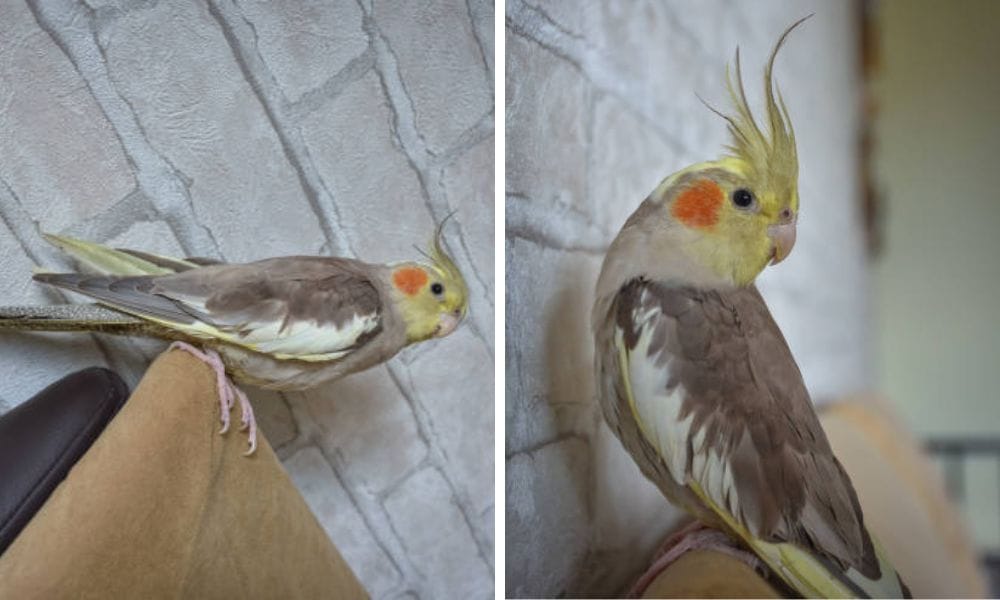
Nutrition: Feeding for Health
Proper nutrition is vital throughout the life cycle of a cinnamon cockatiel. From hatchling to adult, their dietary needs change. Young birds require a protein-rich diet to support rapid growth, while adults need a balanced diet of seeds, pellets, fruits, and vegetables to maintain their health.
Cinnamon cockatiels, like other mutations of the parrot family, may have specific dietary requirements. Bird stores and pet stores often provide specialized feeds that cater to these needs, ensuring that your pet cockatiel receives all the necessary nutrients.
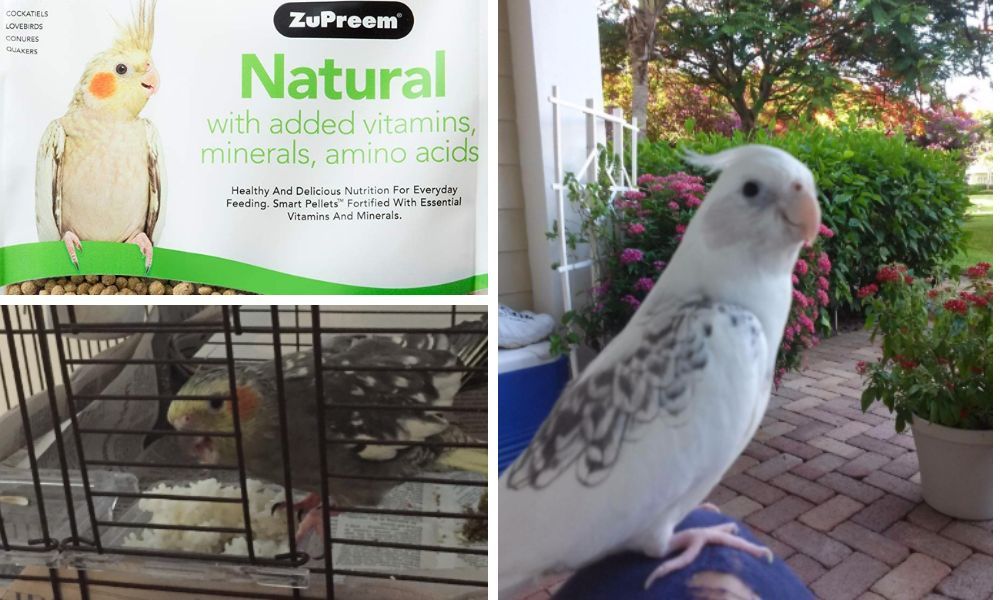
Socialization: The Key to a Happy Bird
Socialization is crucial for cinnamon cockatiels, as it affects their behavior and overall well-being. These birds thrive on interaction and can become very attached to their human families. Regular handling and playtime help to build trust and prevent behavioral issues.
Cockatiel owners should start socializing their birds at a young age. This includes introducing them to different people, environments, and experiences. A well-socialized cinnamon cockatiel is more likely to be confident, friendly, and adaptable.
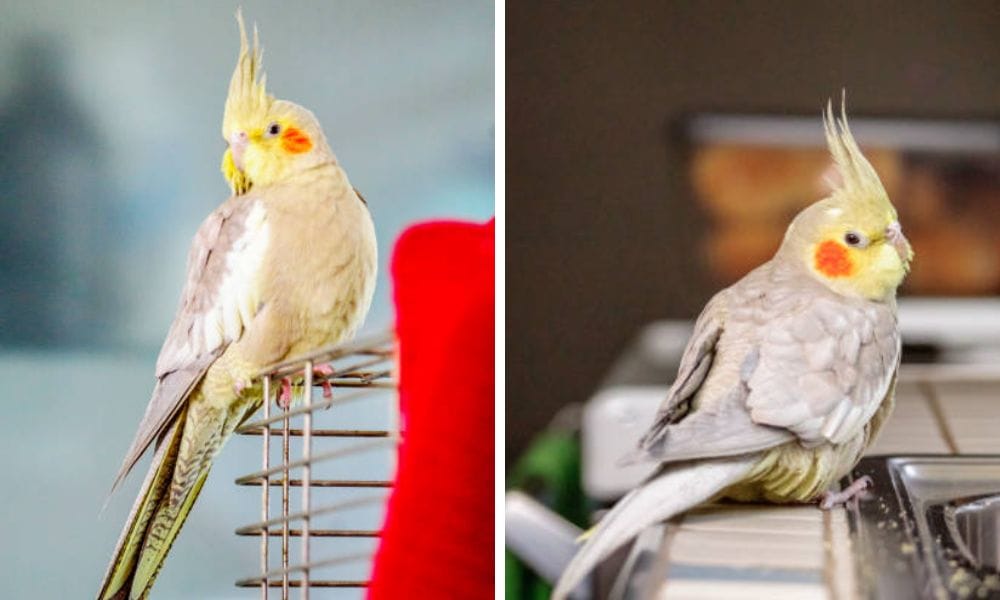
Health and Wellness: Regular Check-Ups
Regular veterinary check-ups are essential for maintaining the health of a cinnamon cockatiel. These appointments allow for early detection of potential health issues and provide an opportunity for owners to discuss care and nutrition with a professional.
Common health concerns for cinnamon cockatiels include respiratory infections, feather plucking, and obesity. By monitoring their pet's health and seeking veterinary advice when needed, cockatiel owners can ensure their feathered friends live long and healthy lives.
Exercise: Keeping Your Cockatiel Fit
Exercise is as important for birds as it is for humans. Cinnamon cockatiels need opportunities to fly and explore to keep their muscles strong and their minds stimulated. A spacious cage with room for movement and toys for mental engagement is a must.
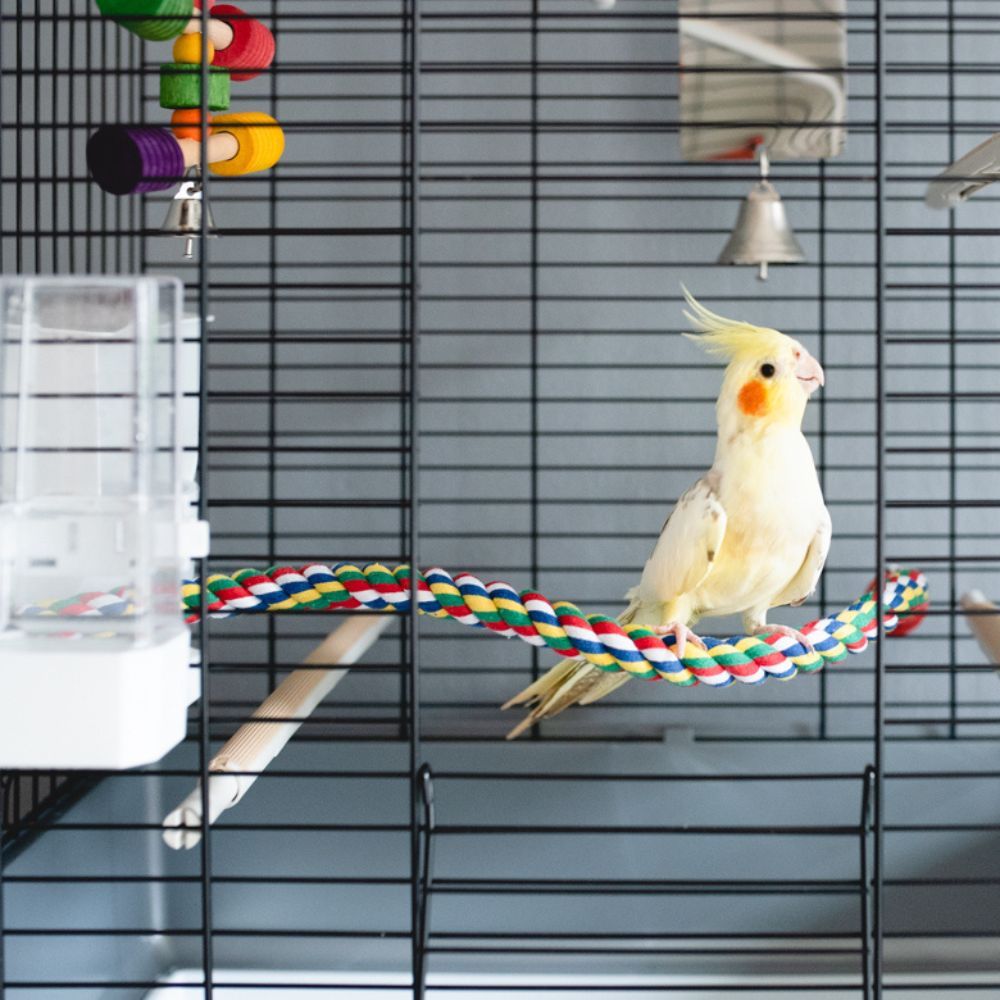
For those who prefer to keep their pet's wings clipped, providing a safe, enclosed space for the bird to roam and stretch its wings is the best bet. This allows the cockatiel to exercise without the risk of escape or injury.
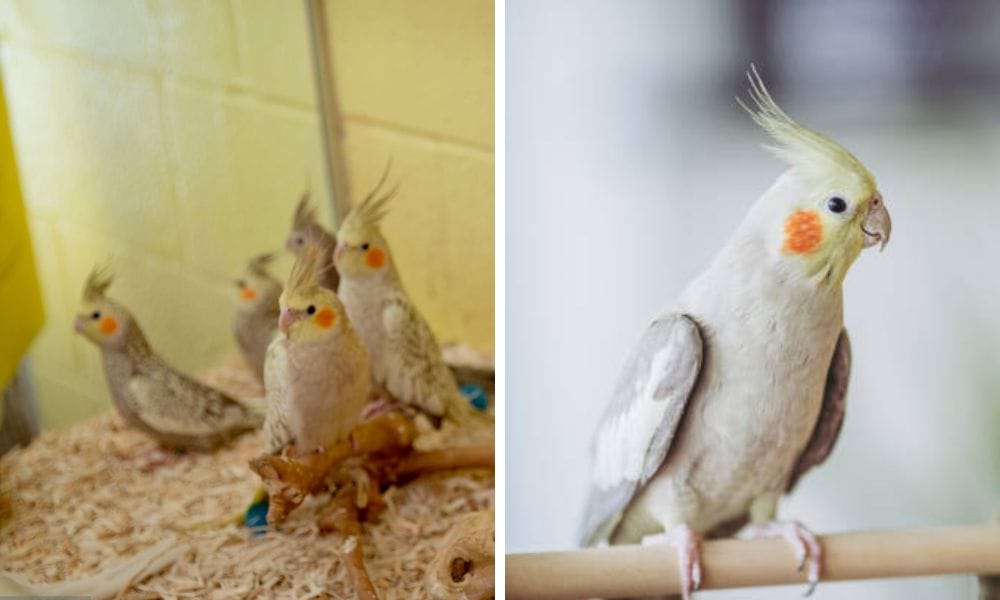
Grooming: A Pristine Plumage
Grooming is an integral part of a cinnamon cockatiel's life. Regular baths help to keep their feathers clean and in good condition. Additionally, nail and beak trimming may be necessary to prevent overgrowth and associated problems.
Cockatiel owners can encourage their birds to bathe by offering shallow dishes of water or misting them with a spray bottle. Most cockatiels enjoy bathing and will often do so voluntarily if given the opportunity.
Aging: The Golden Years
As cinnamon cockatiels age, they may slow down and require adjustments to their care. Older birds might not be as active and could need a diet lower in calories to prevent weight gain. They may also be more susceptible to age-related health issues.
It's important for cockatiel owners to be attentive to the changing needs of their aging birds. Providing a comfortable environment and continuing regular veterinary care can help ensure a high quality of life during their senior years.
Summary
The life cycle of a cinnamon cockatiel is a remarkable journey from a helpless hatchling to a vibrant adult. Understanding each stage—from hatching, fledging, and juvenile development to sexual maturity, breeding, and aging—is crucial for any cockatiel owner. Proper care, including nutrition, socialization, health management, exercise, and grooming, ensures that these delightful birds thrive at every stage of their lives. With their unique coloring and affectionate nature, cinnamon cockatiels continue to capture the hearts of bird enthusiasts worldwide.
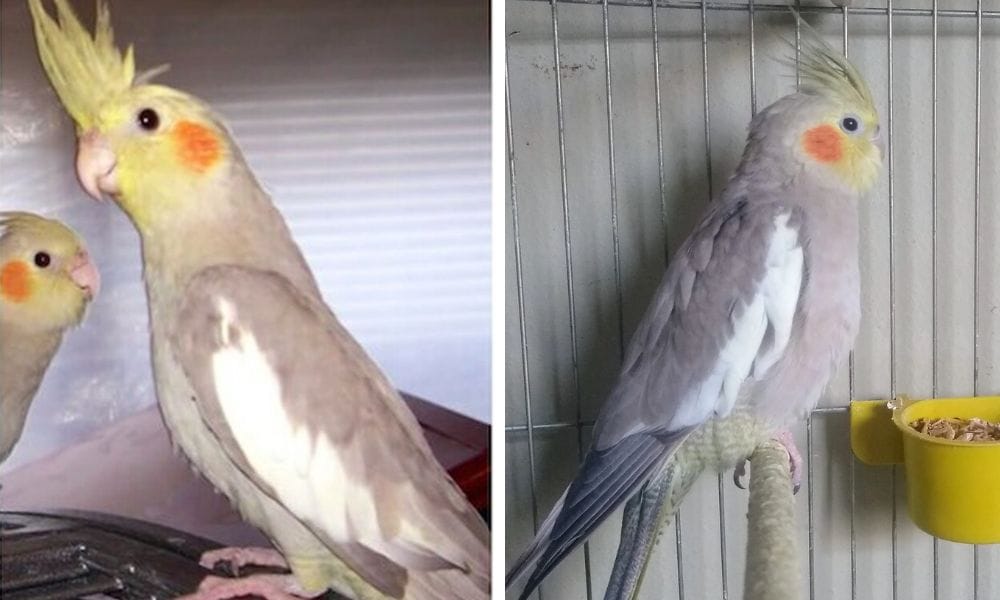
FAQ Section
Q: How can I tell if my cinnamon cockatiel is male or female? A: As cinnamon cockatiels mature, males typically develop a brighter yellow face and lose the yellow barring on their tail and wings, while females retain these features. Observing behavior can also provide clues, as males are more likely to vocalize and mimic sounds.
Q: What should I feed my cinnamon cockatiel? A: Cinnamon cockatiels require a balanced diet that includes a mix of seeds, pellets, fruits, and vegetables. Young birds need more protein to support growth, while adults need a varied diet to maintain health. Consult with a veterinarian for specific dietary recommendations.
Q: How often should I take my cinnamon cockatiel to the vet? A: It's recommended to take your cinnamon cockatiel for a veterinary check-up at least once a year. However, if you notice any signs of illness or behavioral changes, you should schedule a visit immediately. Regular check-ups help ensure your bird's health and longevity.

